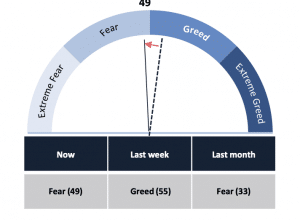Investing in a diversified portfolio has long been considered a fundamental principle of successful investing. However, with the ever-changing dynamics of the modern financial landscape, the approach to portfolio diversification has also evolved. In this article, we will explore the modern take on portfolio diversification strategies and delve into the key principles, strategies, and future trends that can help investors make informed decisions.
Understanding Portfolio Diversification
Before we dive into the modern strategies, it’s important to understand the essence of portfolio diversification. At its core, diversification is the practice of spreading investments across various asset classes, industries, and geographical regions. The goal is to reduce risk by not putting all your eggs in one basket. By diversifying, investors can potentially mitigate the impact of a single investment’s poor performance on their overall portfolio.
Let’s explore this concept further and delve into the benefits of portfolio diversification.
The Importance of Diversification
Diversification serves as a crucial aspect of risk management in investing. It helps protect investors from the volatility and unpredictability of the market. A well-diversified portfolio can lower the risk of losses, as different investments tend to perform differently under various market conditions. It offers a balance between risk and potential reward, enabling investors to achieve their financial goals while safeguarding against major setbacks.
Imagine a scenario where an investor puts all their money into a single stock. If that stock experiences a significant decline in value, the investor stands to lose a substantial portion of their investment. However, if the investor had diversified their portfolio by investing in multiple stocks, bonds, and other asset classes, the impact of a single investment’s poor performance would be minimized.
Furthermore, diversification can help smooth out the overall returns of a portfolio. While some investments may experience losses, others may perform well, offsetting the negative impact. This can lead to more consistent and stable returns over time.
Key Principles of Portfolio Diversification
When diversifying a portfolio, certain key principles should be considered. Firstly, asset allocation plays a vital role. Allocating investments across different asset classes, such as stocks, bonds, and real estate, can help achieve a balanced and diversified portfolio. Each asset class has its own risk and return characteristics, and by combining them, investors can create a portfolio that is less susceptible to the fluctuations of any single asset class.
For example, during times of economic downturn, stocks may experience significant declines, but bonds may perform relatively better. By having a mix of both in a portfolio, investors can potentially reduce the overall impact of market volatility.
Additionally, diversifying within asset classes is equally important. Investing in different industries or sectors within a specific asset class further reduces risk, ensuring that the impact of any single market event is minimized. For instance, within the stock market, diversifying across sectors such as technology, healthcare, finance, and consumer goods can help mitigate the risk associated with a downturn in a particular industry.
Another principle to keep in mind is the importance of rebalancing. Over time, the performance of different assets and sectors may vary, causing the initial allocation to deviate. Regularly rebalancing the portfolio maintains the desired asset allocation, ensuring the risk-reward balance remains intact. This involves selling investments that have performed well and buying more of those that have underperformed, bringing the portfolio back to its target allocation.
By adhering to these key principles of portfolio diversification, investors can enhance their chances of achieving their financial objectives while managing risk effectively.

Modern Strategies for Portfolio Diversification
In the evolving landscape of portfolio diversification strategies, modern tools are reshaping how investors approach market fluctuations and asset allocation. Among these advancements, Granimator stands out. By fusing the nuances of quantum mechanics with the capabilities of artificial intelligence, it offers traders unique predictive insights into market behavior. For those aiming to enhance their portfolio’s resilience and returns, the choice to improve trading via Granimator becomes an essential component of the contemporary investor’s toolkit.
As we enter a new era of technological advancements and expanding investment opportunities, modern strategies for portfolio diversification have emerged. Let’s explore two significant developments in this field.
Technological Advancements and Portfolio Diversification
The rapid advancement of technology has revolutionized the way investors diversify their portfolios. With the rise of robo-advisors and online investment platforms, individuals can now gain access to automated portfolio management services.
These platforms leverage algorithms and big data analysis to construct and monitor diversified portfolios tailored to an individual’s risk tolerance and financial goals. By utilizing sophisticated algorithms, these robo-advisors can analyze vast amounts of data and make investment decisions based on historical trends and market indicators.
Furthermore, these platforms offer investors the convenience of 24/7 access to their portfolios, allowing them to make real-time adjustments and stay informed about their investments. This level of accessibility and automation has made portfolio diversification more efficient and user-friendly, empowering individuals to take control of their financial future.
Moreover, the democratization of portfolio diversification through technology has made it more accessible to a wider range of investors. In the past, portfolio management services were typically reserved for high-net-worth individuals or institutional investors. However, with the advent of robo-advisors and online investment platforms, even small investors can now benefit from professional portfolio diversification strategies.
The Role of Alternative Investments
Another modern approach to portfolio diversification involves exploring alternative investments. Traditionally, portfolios were limited to stocks, bonds, and cash. However, alternative investments, such as private equity, hedge funds, real estate, and commodities, have gained popularity as they offer the potential for uncorrelated returns to traditional asset classes.
By incorporating alternative investments into a portfolio, investors can reduce their exposure to market volatility and potentially enhance their risk-adjusted returns. Alternative investments often have low correlation with traditional asset classes, meaning they can perform well even when other investments are underperforming.
For example, private equity investments provide investors with an opportunity to invest in privately-held companies that are not listed on public exchanges. These investments can offer higher potential returns compared to publicly traded stocks, as they are often associated with early-stage companies or companies in industries with significant growth potential.
Hedge funds, on the other hand, employ various investment strategies, such as long-short equity, global macro, and event-driven, to generate returns that are not solely dependent on the overall market performance. This diversification of strategies can help hedge funds navigate different market conditions and potentially deliver positive returns even during market downturns.
Real estate investments, whether through direct ownership or real estate investment trusts (REITs), provide investors with exposure to a tangible asset class that has historically demonstrated long-term appreciation. Real estate investments can offer regular income through rental yields and the potential for capital appreciation over time.
Commodities, such as gold, oil, and agricultural products, can also serve as an alternative investment to diversify a portfolio. These assets often have a low correlation with stocks and bonds, making them a potential hedge against inflation and economic uncertainties.
Incorporating alternative investments into a diversified portfolio requires careful consideration of the investor’s risk tolerance, investment goals, and time horizon. It is important to conduct thorough research and seek professional advice to ensure that alternative investments align with one’s overall investment strategy.
In conclusion, modern strategies for portfolio diversification have been shaped by technological advancements and the exploration of alternative investments. The accessibility and automation provided by robo-advisors and online investment platforms have democratized portfolio diversification, making it more accessible to a wider range of investors. Additionally, incorporating alternative investments can enhance diversification and potentially improve risk-adjusted returns. As the investment landscape continues to evolve, it is crucial for investors to stay informed and adapt their portfolio diversification strategies accordingly.
Risks and Rewards of Diversification
While diversification offers numerous benefits, investors should be aware of the potential risks and rewards associated with this strategy.
Evaluating Potential Risks
One risk to consider is over-diversification. In an attempt to reduce risk, investors may inadvertently dilute the potential benefits of their portfolio. Holding too many investments can make it challenging to effectively manage and monitor the portfolio’s performance. Therefore, striking the right balance is crucial.
Maximizing Potential Rewards
On the rewards side, diversification can offer opportunities for greater returns. By investing in different asset classes and industries, investors can potentially benefit from the outperformance of specific sectors or assets, while mitigating the impact of underperforming investments. This broad exposure allows investors to capture growth opportunities as they arise.
The Future of Portfolio Diversification
Looking ahead, there are several trends that are expected to shape the future of portfolio diversification.
Predicted Trends in Diversification
One prominent trend is the growing emphasis on environmental, social, and governance (ESG) factors in portfolio construction. Investors are increasingly considering the impact of investments on sustainability, ethics, and corporate governance. Incorporating ESG criteria into the diversification process allows investors to align their investments with their values while potentially enhancing long-term returns.
Preparing for Future Market Changes
Additionally, market volatility and geopolitical uncertainties continue to pose challenges for investors. In response, diversification will play an even more critical role in managing risk and capitalizing on emerging opportunities. Regular portfolio reviews and adjustments will become crucial to navigate the evolving market dynamics effectively.
Conclusion
In conclusion, portfolio diversification remains a fundamental strategy in the modern investment landscape. By understanding its importance, adhering to key principles, and embracing modern strategies, investors can build robust portfolios capable of weathering various market conditions. With a careful balance of risks and rewards, the future of portfolio diversification holds the promise of achieving long-term financial goals while adapting to the changing investment landscape.






